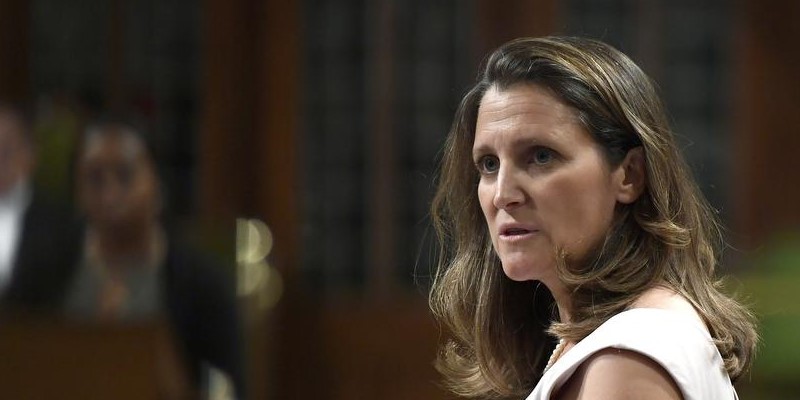Federal budget does not meet definition of ‘restraint’

I was forced by Chrystia Freeland, the finance minister, upon her delivery of the federal budget, to repair to the Merriam-Webster dictionary to check my English comprehension. In her budget speech she said the government is exercising “fiscal restraint” and determined to uphold “fiscal responsibility,” but the tables in the budget document with all the spending figures did not align with what I thought “fiscal restraint” and “fiscal responsibility” meant.
To give context, even before the latest budget, the Trudeau government had dramatically ramped up spending since 2015, raising significantly the cost of government as a percentage of the economy—a cost borne by Canadian taxpayers and consumers in the form of higher taxes, higher borrowing, and higher inflation. In this budget, the cost has become yet higher, to the tune of more than $100 billion in program spending (including net actuarial losses) for the five fiscal years ended 2026-27, relative to last year’s budget.
The government has, to put it another way, become more than $10,000 more expensive over five years for an average family of four, compared to estimates just a year ago. And given this government’s propensity to revise spending projections upward with each fiscal update, even this hefty $10,000 price tag is likely an understatement. Indeed, spending in this budget is not only far higher than the last, it’s materially higher even than spending in the Fall Economic Statement delivered less than six months earlier.
In last fall’s statement, spending was projected to rise from $449.8 billion in 2023-24 to $493.1 billion in 2027-28. Now, spending is budgeted to be $452.9 billion in 2023-24, rising to $506.5 billion in 2027-28. It’s not clear what remarkable change in circumstances in the intervening six months justified an annual spending increase of more than $13 billion in the year 2027-28, but that is what the federal government is now planning. No one therefore should be surprised if in the fiscal update six months from now, planned spending over the next five years again inexplicably jumps by many billions more.
The additional spending in this budget is for just about everything: billions in subsidies blasted into the government’s bottomless climate policy money pit, more money for VIA Rail and corporate welfare to private companies, increased spending on Indigenous services, agricultural and forestry subsidies, federal initiatives for “supporting our official languages,” ferry services in the Maritimes, additional employment assistance programs, handouts to the tourism sector, sundry gender and racial equality programs, increased handouts to university students, and the list goes on.
It's this great spending bonanza on almost everything imaginable that brings us to Merriam-Webster, which defines “fiscal” as “of or relating to taxation, public revenues, or public debt” and “restraint” as a noun that describes an act of “restraining,” whose most applicable definition seems to be “to limit, restrict, or keep under control” and “to moderate or limit the force, effect, development, or full exercise of.”
Merriam-Webster is an American dictionary, and sometimes American English differs from British. So, looking in Collins for a double check: “restraints are rules or conditions that limit or restrict someone or something.” Unfortunately, in this budget the limitations, restrictions, controls and moderations on public spending (and by extension, taxation) are nowhere to be seen. My consultation of two dictionaries confirms, thankfully, that my English comprehension is fine. It’s the finance minister who is wrong.

